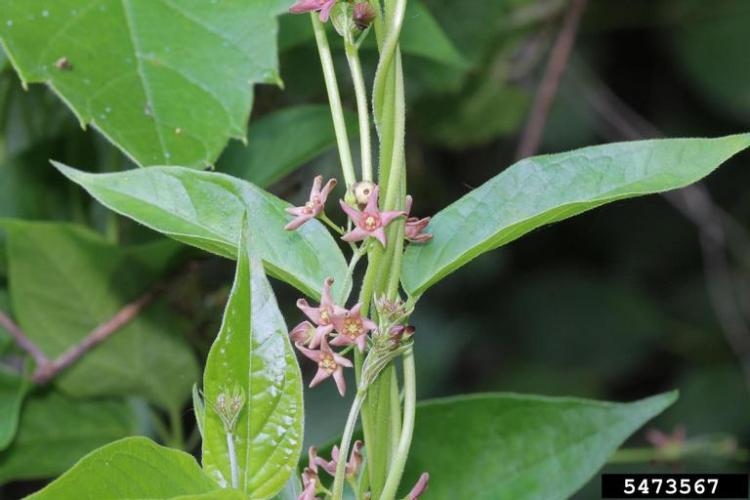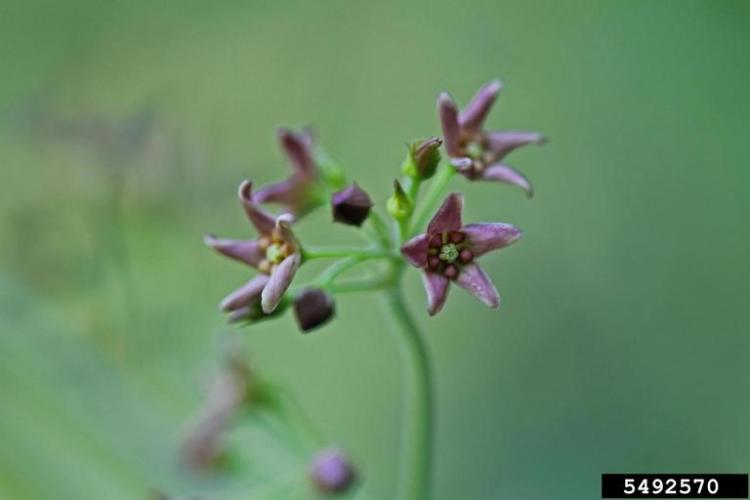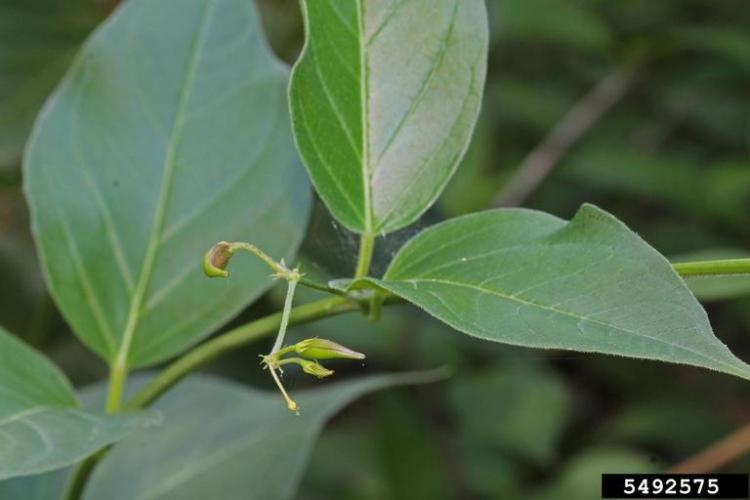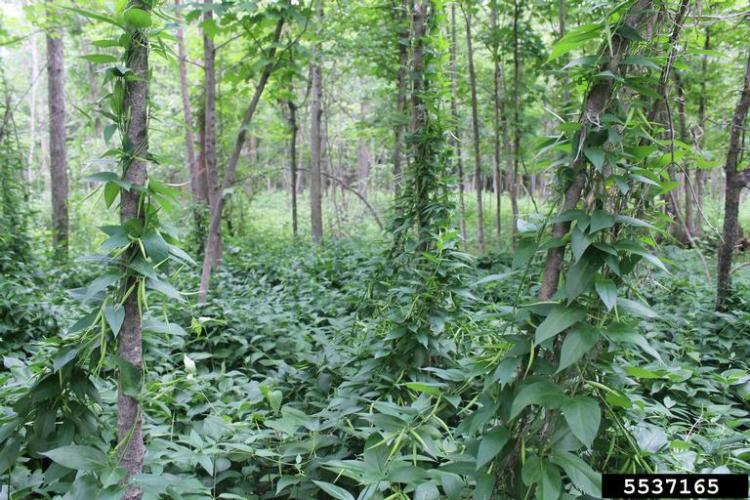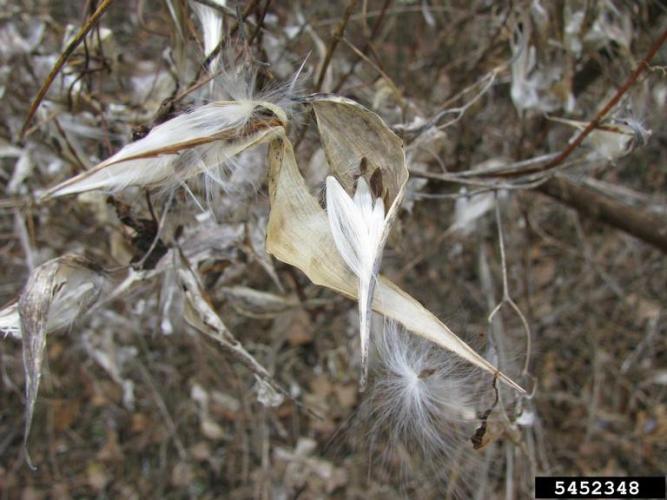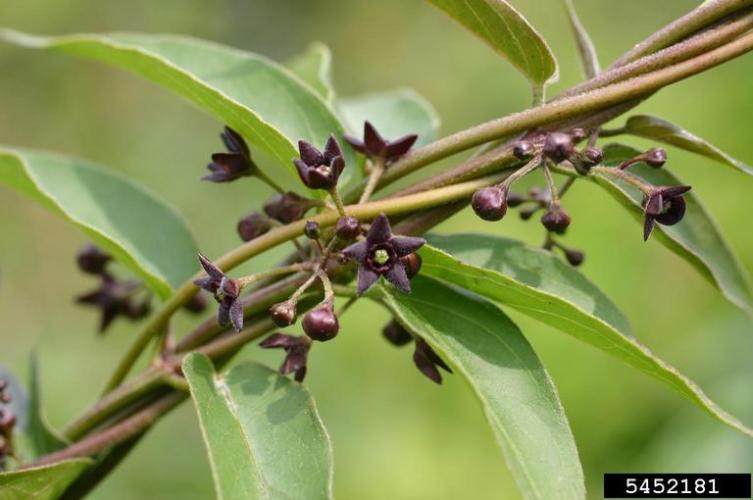Swallowwort, Pale
Identification
Appearance
Vincetoxicum rossicum is an herbaceous, twining, long-lived perennial vine. The vines can reach 5 feet in length.
Foliage
Leaves are opposite, dark green, oval, shiny, 3-4 inches long and 2-3 inches wide. They are attached to the vine by a petiole about 0.4 inches.
Flowers
Flowering occurs in June to September, when dark pink to deep red, 5-petaled, star-shaped flowers appear in clusters. Flowers are approximately 0.25 inches across and are covered with white hairs.
Fruit
The fruits are similar to milkweed pods. They are slender, 2-3 inches long and split to reveal small seeds with tufts of white hairs. The hairs allow the seeds to be readily dispersed by the wind.
Biology
Origin
Pale swallowwort is native to Europe and was likely introduced into the United States for ornamental purposes. It can be found in Connecticut, Massachusetts, Maine and New Hampshire, where it can form large stands in human or naturally disturbed habitats. It is especially competitive in shallow soils over limestone, which makes it prone to coming into contact with rare native plants of limestone habitats.
Habitat
Man-made or disturbed habitats, forest edges, forests, meadows and fields, shores of rivers or lakes.
Threat
Vincetoxicum rossicum invades upland areas and tolerates a wide range of light and moisture conditions. It can grow rapidly over native vegetation to the point of dominating the understory of a woodland. Wind-dispersed seeds allow it to disperse over long distances. When it is cut, this plant resprouts vigorously, making control difficult.
Lifecycle
Pale swallowwort emerges in spring and flowers from June to July. The flowers are self-pollinating and the plant spreads primarily by seed. Fruit pods are formed shortly after flower production. Thick infestations in full sun can produce up to 2,000 seeds per square meter. The seeds are polyembryonic (i.e., having one to four embryos per seed) which greatly increases the potential for establishment. Wind dispersal of seed occurs from late July and continues into the fall. Populations growing under dense wooded canopy may have inadequate resources to produce flowers or seeds. Pale swallowwort dies back to the ground every winter. Pale swallowwort root crown fragments support dormant buds that readily sprout if not destroyed.
Vermont Distribution
Present in Vermont.
How You Can Help
Pale swallowwort is on the early detection list of plant species. Early detection of new infestations increases our ability to slow their spread and potentially eradicate them from affected areas.
Citations
Photo Credit:
Pale Swallowwort, 5473567, Robert Routledge, Sault College, CC 3.0
Infestation, 5537165, David Nisbet, Invasive Species Centre, Bugwood.org
Fruit, 5492575, Rob Routledge, Sault College, Bugwood.org
Seeds, 5452348, Leslie J. Mehrhoff, University of Connecticut, Bugwood.org
Flower, 5492570, Rob Routledge, Sault College, Bugwood.org
Black swallowwort, 5452181, Leslie J. Mehrhoff, University of Connecticut, Bugwood.org
